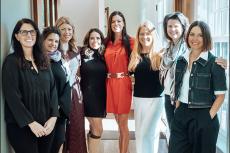Not to be a jerk, but odds are, you’re not going to see an American bittern, despite its large size (a bit smaller than a great egret). That’s just fine. Frankly, the American bittern doesn’t want to be seen; it chose invisibility as its superpower. If you really want to see one, read on. I’ll tell you how. This is the best time of year to try, but you’ve been warned, it’s not easy. Make the experience at least as much about the journey as the destination. You may never get there.
First, drive over the Ponquogue Bridge into the sky over Hampton Bays and turn right on Dune Road, heading west. American bitterns are here in the winter months, roughly from December through March, which luckily coincides with an empty road. This is important, because there will be times during your search for the bittern that you’ll be creeping along at five miles an hour, or even stopped.
On your right is Shinnecock Bay. Between it and Dune Road are tall grasses and reeds. The American bittern is there right now as I type, I’m sure of it, its large yellow-green feet hidden in murk. Ever watch the moon slowly rise off the horizon? That’s how the bittern is moving through those reeds, with small steady movements. It’s on a slow search for amphibians, insects, fish, crustaceans, and even small mammals, which it swallows headfirst.
In January, with my eldest daughter, we made the drive. She was home during college break instead of in Morocco for a winter semester that was canceled because of the Israel-Hamas war. Instead of being in a new country sharing experiences with other 19-year-olds, she was stuck with me on this strange quest, to which few 19-year-olds could relate. “What did you do during winter break?” “Oh, the usual. Scanned acres of reeds for an invisible bird with my father while we listened to Leonard Cohen.”
It was misty, cold, and gray. Rolling slowly westward, my daughter scanned the brown marsh from her window. Utility poles, numbered with metal placards about half the size of an iPhone, line the road. At pole 430, she spotted a bittern, crouched where the reeds met a small open pool of water. I stopped my car in the middle of the road. “This is definitely illegal,” she said, an inveterate rule follower.
We stepped out, whispering and excited, wind in our ears. A utility worker up at pole 431 watched quizzically as we walked quietly from the car, doors open. Standing in the middle of the road may sound dangerous, but we could hear cars a mile away. It was quiet. We scoured the reeds with our binoculars.
“Where?” I hadn’t yet seen the bird.
“Gone,” she said.
“Gone?”
“Gone.”
“Damn.” Well, that’s just the thing. Bitterns disappear.
The utility man kept a close eye on us as we re-entered the car. A hundred yards up the road I cut a quick U-turn. “Illegal,” my daughter reminded me again.
Rolling slowly east now, knowing the bird must still be there, we focused on the reeds. There! In the exact spot, the bird again. I stopped the car and pressed a button to open my window. A gull called from mid-bay. I locked eyes with the bittern as it hid behind a single thick blade of grass, an eye on either side. It stared back at me, motionless, sure that it had me fooled.
The bittern is largely brown and white, but the magic of its camouflage comes from the vertical stripes that run the length of its neck, which it famously elongates when frightened, directing the tip of its long, pointed bill to some skyward location. In this position, the bird looks like a reed, and according to allaboutbirds.org, “even sways with the breeze” to complete the disguise.
It has many nicknames relating to its call: stake driver, thunder pumper, butterbump, mire drum. “Its odd booming calls sound like the gulps of a thirsty giant,” says the website. However, on Dune Road, the only giants are the empty castles that face the ocean. Silent. I’ve never heard a bittern call during the winter months. In fact, in nearly 25 years of birding on the East End, I’ve heard one call just once, during Covid, at Big Reed Pond in Montauk.
Apparently, they were once more a part of our soundscape. As recently as 1974, when John Bull published “Birds of New York State,” he wrote, “Its booming notes in spring are among the characteristic sounds of the meadows.”
So, apologies for writing about a bird you’ll likely neither see nor hear. But it’s there, in the reeds, like faith — its presence felt, if not always visible. It’s just waiting for you to take your eyes off those giants and to be fascinated by it instead. On the ride home we agreed that Cohen would understand. “You can add up the parts, you won’t have the sum.”




